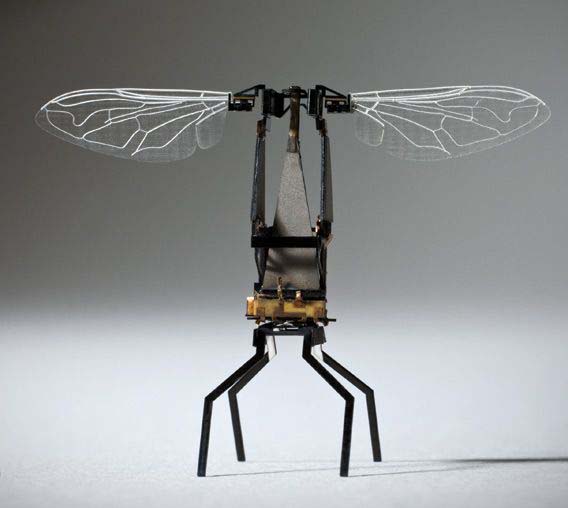The bee could be replaced by a robot
Researchers are also put in the worst case, the case when bees and most pollinators disappear from the ground. A possible substitute would be a robot bee. We would be left without our precious raw honey, royal jelly, wax and propolis.
Hoping that this day never arrives, in El Cortijuelo de San Benito in Las Rozas in Madrid or our online store, you can buy the best honeys in Spain and Europe: heather honey, eucalyptus, thyme, rosemary, lavender, manuka, acacia, orange blossom, chestnut and many more.
You may be interested in our next article: The use of drones in agriculture
The first robot bee
A group of scientists at the Warsaw Polytechnic University in Poland have created the first robot bee, a miniaturized drone capable of pollinating flowers artificially. In addition, the robotic bee has the ability to find the flower, collect its pollen and transfer it to another flower, thus achieving the pollination of the female flowers.
This robot bee has successfully passed tests in different fields, demonstrating its ability to pollinate flowers with the same efficiency as honey bees.
This new creation offers us an alternative for a near future, in which the bees will end up disappearing from the planet, as indicated by the same developer of this robotic bee and Polish engineer Rafal Dalewski.
First tests with flowers
Last summer Dalewski did his first tests and a few months ago he collected his fruits: the first seed fertilized by a robot bee. With this fact, he has demonstrated that his robotic bee can replace the honey bees and their beekeepers.
He also added, but this time a bit in jest, that he has not yet been able to design a drone that is capable of producing honey, but that nevertheless, technology makes great leaps every year and in a few years we could find great surprises.
“He does not believe that the robotic bee will replace insects and other pollinating animals, but he does believe that it can help pollinate crops and complement them. However, he refuses to predict whether his robot bee will pollinate flowers better than honey bees.
The robotic bee can be programmed to pollinate the flowers of a specific variety and area.
Therefore, this robot bee, apart from helping nature with the pollination of its flowers, can also do it in an intelligent way. Then it can be programmed to pollinate the flowers of a particular variety and in a specified area, all of them through its computer programming.
Precision agriculture
The Warsaw Polytechnic University has developed two types of pollinator drones, one with the ability to fly, fly and the other with the ability to land. Both have a kind of feather duster that is used to impregnate the drones with pollen from the flowers, which is passed from flower to flower in order to pollinate them.
The terrestrial drone has a longer working autonomy and its battery has a longer life than that of the flyer. Consequently, the terrestrial drone works longer hours without needing to be recharged.
These robots would also have other uses in precision agriculture, being able to act as intelligent dispensers of fertilizers, fertilizers or pesticides, depositing the products in specific quantities according to the type of plant and location.
Precision agriculture seeks to maximize the right amount of fertilizers and other necessary inputs, providing them at the right time and where you need them and avoiding the maximum waste of products.

Photo 1. Robot bee for pollination
Future of pollinators and honey bees
This new invention may sound very futuristic, but it could be of enormous help for nature and for the well-being of man, because the mortality figures of pollinators do not stop rising year after year and in the very distant future, could be the only option to pollinate the flowers of angiosperms plants.
A few decades ago, French beekeepers discovered that as winter passed, many of their hives disappeared for no good reason, what we now call hive collapse. Decades ago these disappearances of bees only reached 3% of all hives. However, the figures have risen to an average of 30 % last year. Even if you talk to different beekeepers, you can hear figures as high as 50%, figures that give you the shivers when you hear them.
The consequences are not often seen, because these hives are quickly renewed with new queens. However, these are data for which many researchers have already sounded the alarm, warning of the harmful consequences of the disappearance of honey bees.
Source:
El periódico español ABC: http://www.abc.es/







Leave a Reply
Want to join the discussion?Feel free to contribute!